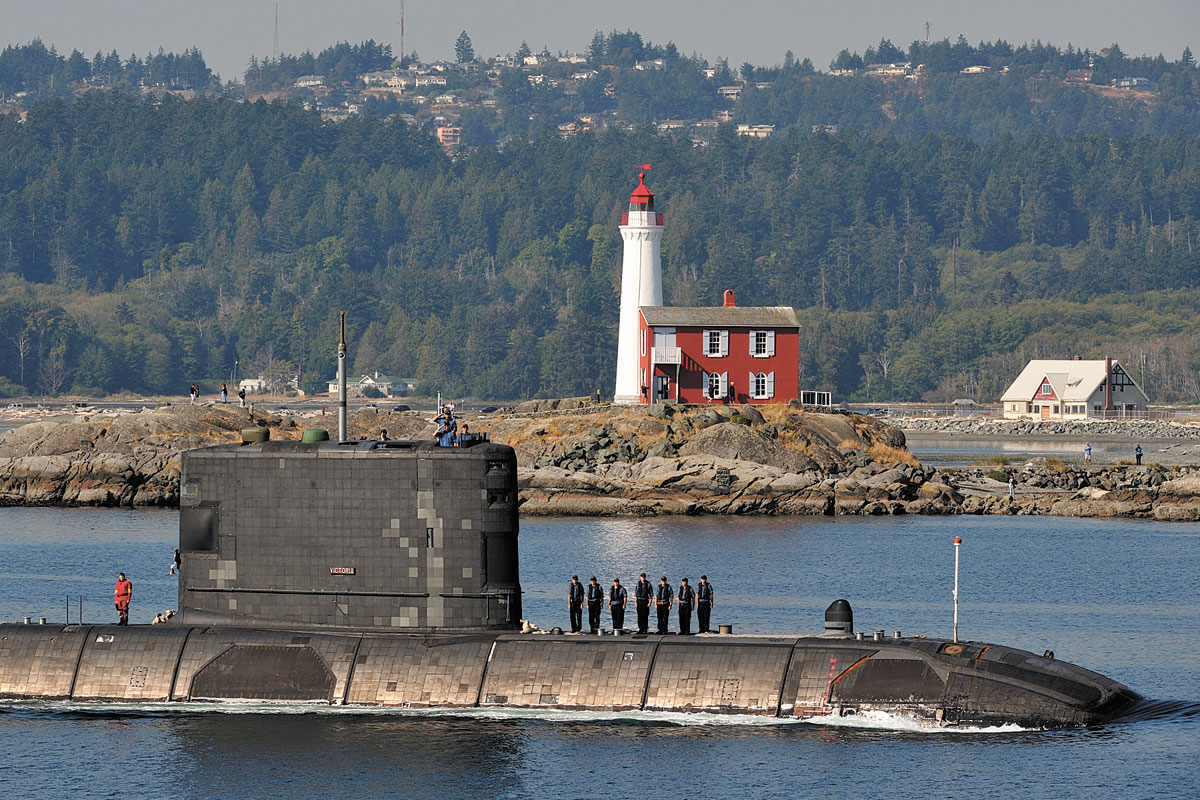Canadian submarines conduct successful deployments
By Lookout on Dec 06, 2018 with Comments 0
Courtesy of the Maple Leaf ~
The Royal Canadian Navy’s (RCN) Submarine Force has had a momentous year, marked by two highly successful simultaneous out-of-area deployments.
The lengthy deployments of Her Majesty’s Canadian Submarines (HMCS) Chicoutimi and Windsor – for 197 and 133 days respectively – highlight the RCN’s ability to concurrently deploy its submarines and provide support to Canada’s allies.
They also underpin the wide-reaching capability of Canada’s submarine fleet, and the professionalism and dedication of Canadian sailors.
“The work that both submarines did with our closest allies ensures that our submarines are ready to provide defence in depth to Canada,” said Commander Mike Mangin, Deputy Commander of Operations for the Canadian Submarine Force. “By conducting both offensive and defensive anti-surface warfare scenarios, the crews of both boats are better prepared to fulfill this task should it ever be called upon.”
Canadian submariners are well-trained and when combined with the stealth of a Victoria-class submarine, they form a formidable capability. Throughout their months-long deployments, both Windsor and Chicoutimi proved their value as instruments of power projection on the international stage and demonstrated to both allies and adversaries that Canada is a credible, reliable and effective player in the under-sea domain.
Western Pacific region
In September 2017, Chicoutimi commenced its deployment to the western Pacific, visiting Pearl Harbor in Hawaii, Yokosuka and Sasebo in Japan, and Guam along the way.
During its deployment, Chicoutimi took part in ANNUALEX – a bilateral training engagement between the United States Navy (USN) and the Japanese Maritime Self-Defense Force – marking the first time another nation has been invited to participate. This trip also marked the first visit by a Canadian submarine to Japan since HMCS Grilse in the late 1960s.
Chicoutimi worked closely with the USN, building combined experience in countering the submarine threat. USN maritime patrol aircraft flew numerous missions against Chicoutimi during the transit to and from Japan, as well as in the northwestern Pacific Ocean. These missions allowed U.S. aircrew to hone skills that would be essential if an unknown submarine was approaching the North American continent.
Chicoutimi was also able to train with other Pacific partners, notably a brief event with French Navy ships and anti-submarine warfare engagements with Australian aircraft. As well, the integration of a liaison officer from the RCN into the USN Seventh Fleet Headquarters was critical to the success of the deployment and further served to strengthen ties with regional allies.
The Submarine Force marked an additional milestone, which saw the first deployed extended rest and maintenance period (RAMP) conducted by staff from Fleet Maintenance Facility Cape Breton in Esquimalt, B.C.
Mediterranean region
While all of this was happening in the Asia-Pacific region, Windsor was preparing to deploy to the Mediterranean Sea to support NATO.
While there, Windsor conducted certification training as part of a major NATO engagement called Dynamic Manta before deploying into NATO’s Sea Guardian, a maritime security operation aimed at working with Mediterranean stakeholders to maintain maritime situational awareness, deter and counter terrorism, and enhance capacity building.
While Windsor was in the Mediterranean, staff from FMF Cape Scott in Halifax supported a deployed RAMP for the submarine in Souda Bay, Greece.
Crews’ perspective
Cdr Mangin says that from the crews’ perspective the deployments have been “tremendously successful.”
“We train so much for these types of missions that to actually get out there and ‘do the business’ and perform intelligence gathering, surveillance and reconnaissance to support maritime situational awareness was fun. The opportunity to put so much of our training and drills into practice in a real operation just seems to heighten the enthusiasm.”
During long deployments there is also an opportunity to train and generate newly qualified submariners. During Chicoutimi’s deployment, the crew qualified almost 25 new submariners – just about half of an entire Victoria-class submarine crew.
Additionally, there is ample time to provide crew members with time and experience to advance their qualifications to allow them to take on more senior roles within the crew.
The way ahead
Cdr Mangin says the next few months will be a bit calmer for the Submarine Force. It is focused on returning HMCS Victoria to sea in late 2018 after it has completed its planned maintenance work in the Esquimalt dockyard. Victoria is expected to carry out the yeoman’s work of generating new submariners through 2019.
Windsor is just about to enter a transitional docking work period that will include maintenance and introduce some capability upgrades to the platform.
Chicoutimi is in an intermediate post-deployment docking period and on completion will transit to the East Coast for a transitional docking work period.
Corner Brook is in the home stretch of its extended docking work period with industry in Esquimalt and should be ready for operations in late 2019/early 2020.
“These transitional work periods will extend the operating cycle of the Victoria-class and should allow for some of the work to modernize the class to commence at the same time,” explains Cdr Mangin.
Filed Under: Top Stories
About the Author:






